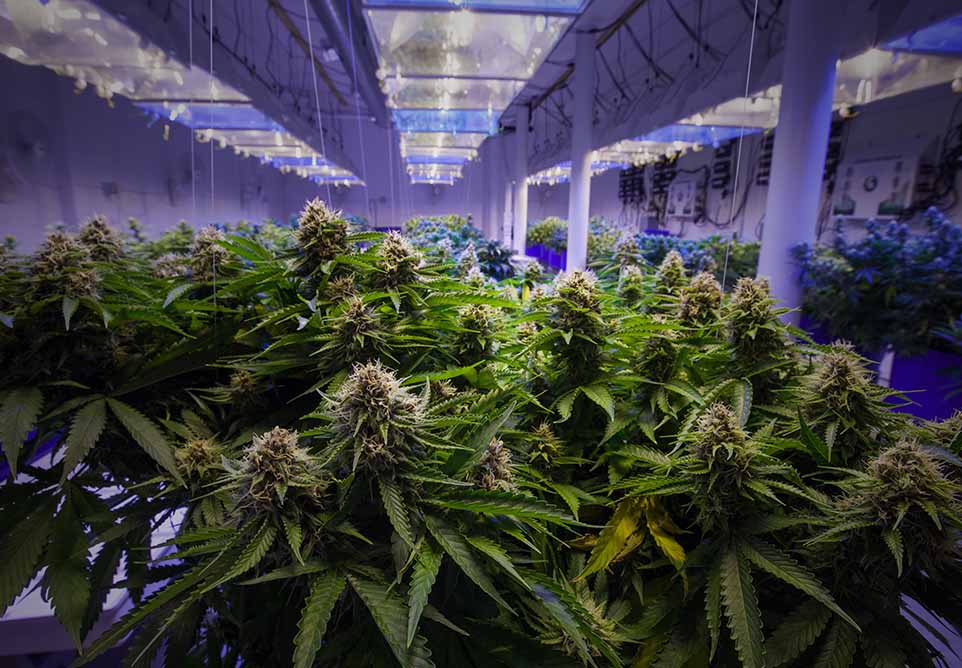Weed, cannabis, marijuana, and hemp, these are just a few ways people refer to it. But what exactly do these terms mean? Are they talking about the same thing?
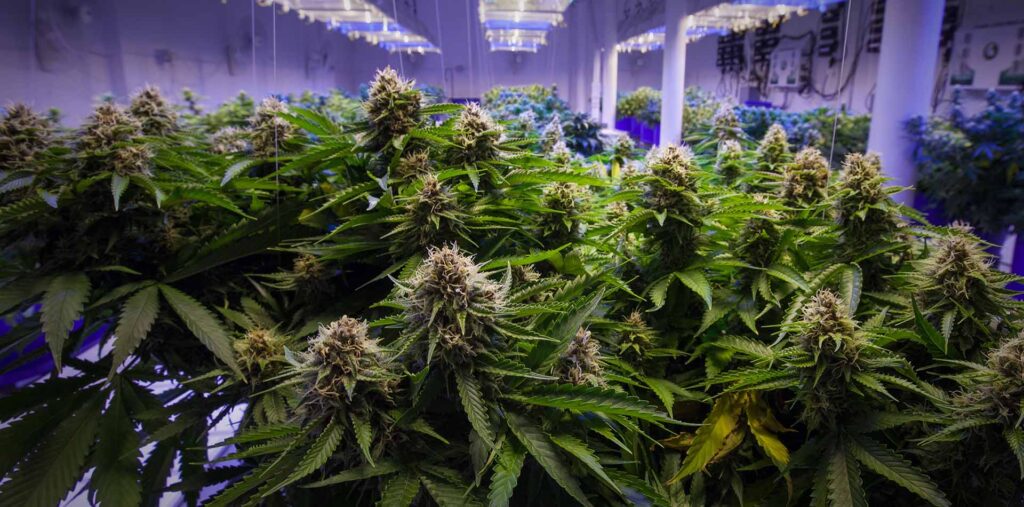
A Brief Look Through Cannabis History
The domestication of cannabis can be traced back at least 7,500 years to East Asia. Some researchers believe it can even be traced back to about 12,000 years ago.1
The healing potential of hemp was documented in Egyptian medical papyrus texts that date back to 1,500 BC.
Fast forward to 1600 AD when hemp was used to make canvas, paper, cloth, rope, and sails in Colonial America. Hemp played such a key role in our young nation’s economy that in 1619, Jamestown announced an order requiring all farmers to grow hemp.2
George Washington grew hemp at his Mount Vernon estate. Benjamin Franklin owned one of the first paper mills that processed hemp into parchment. It’s also believed the first draft of the Declaration of Independence was written on hemp paper.

Learn more about the History of Cannabis and Hemp in the U.S.A.
It’s important to note that back then there was no differentiation between the terms hemp and cannabis. This didn’t happen until 1753.3
Throughout the 1600s, 1700s, and 1800s hemp was valued as food, medicine, and as an important cash crop.
But just as our country was beginning to understand its true potential, sentiment for hemp and cannabis began to change in the early 1900s. That’s when the word, marijuana was introduced into our language. Then, the passage of the Marihuana Tax Act of 1937 essentially made hemp illegal in the U.S.
Today, many states have legalized medicinal and recreational cannabis.
So, when someone new to cannabis hears the terms hemp, marijuana, and weed – it can be natural to wonder if these terms are referring to different things or the same plant.
If this applies to you, don’t worry. Today, we are going to take a moment to clarify a few myths and explain what all these different terms mean.
What is Cannabis?
Cannabis is the scientific name for a genus of flowering plants that belong to the Cannabaceae family. It is the flowers, or buds, of the female cannabis plant that are rich in Delta-9-tetrahydrocannabinol (THC) – which is the psychoactive compound that gives people a high sensation.
So, if cannabis is the scientific name for the plant that appeared in medical journals, where did the term marijuana come from?
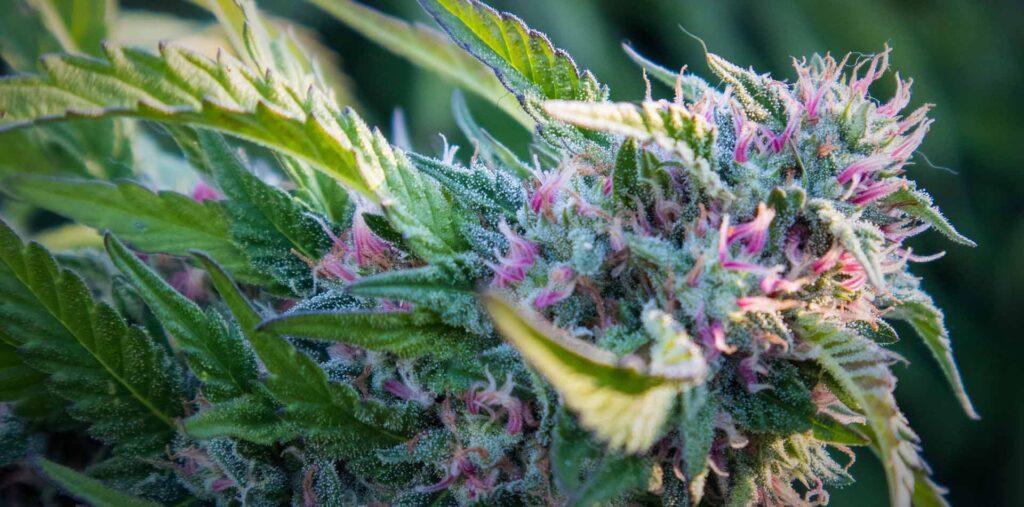
It wasn’t until the 1900s that the word marijuana was introduced into our language. That’s when Hemp became heavily taxed and essentially outlawed with the passage of the Marihuana Tax Act of 1937.
Some believe the term Marijuana was introduced by those who opposed cannabis. They say it was given an exotic sounding name so it could be associated it with Mexican immigrants and play off of anti-immigrant sentiments.4
Whether this is the case or not, the fact remains that for the majority of its history the plant millions have come to love was called hemp or cannabis. The term marijuana has only been in use for less than 100 years out of cannabis’ history which goes back thousands of years.
That is why many people prefer to use the term cannabis when referring to the plant and its buds.
Is Cannabis Legal?
The answer to this question is not so straightforward. That’s because Cannabis remains illegal on the federal level in the U.S, since it is still classified as a Schedule 1 substance.
However, many states have legalized cannabis for medical or recreational use. As of February 2022, 37 states have legalized the medical use of cannabis and 19 states have legalized the recreational use of cannabis for adults.
It is important to keep in mind that cannabis remains illegal on the Federal level and in many countries around the world. That’s why it is important to always check the laws of each state or country you are traveling to, ahead of your trip.
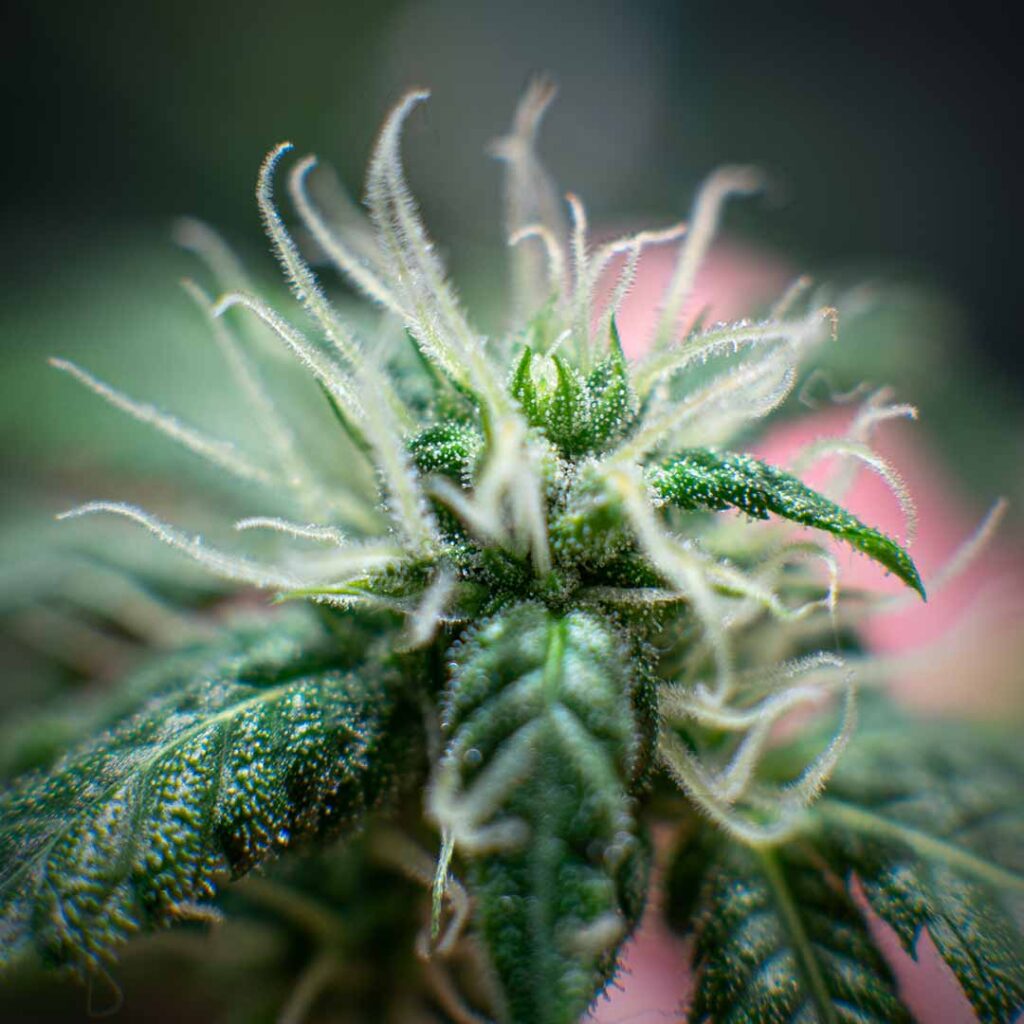
Curious about trying medical cannabis? Make sure to read up on the laws in your State first:
What is Medical Marijuana or Medicinal Cannabis?
Medical Marijuana is cannabis that is intended to be used as medicine by those with a qualifying condition.
In states with medical marijuana programs, patients 18 years of age and older who have a qualifying condition that’s been verified by a doctor can obtain a medical marijuana card from the state. With this card, they can purchase medical cannabis from a dispensary.

If you’re wondering if the cannabis available at a medicinal dispensary is different from the cannabis at recreational-use dispensaries … the answer is, not really. The main difference between recreational and medical marijuana is their intended use.
Recreational Marijuana or Cannabis
Recreational marijuana is intended to be used by adults for pleasure or leisure, instead of for its health benefits. In the states that have legalized recreational use, adults 21 years of age or older can purchase cannabis without having to visit a doctor or register with the state.
Keep in mind that although someone may enjoy recreational cannabis for its psychoactive effects, that does not stop them from being able to enjoy the potential health benefits of their marijuana.
Can You Overdose on Weed?
If you’re wondering if anyone’s death has been attributed exclusively to cannabis, the answer seems to be no. According to the Centers for Disease Control, there have been no deaths that have resulted solely from cannabis use.5
With that said, there have been cases where people with underlying health issues have mixed alcohol or drugs with cannabis and passed away. In these types of cases cannabis has been listed as a possible contributing factor – not the sole cause of death.
Is It Possible to Take Too Large of A Dose?
Although it’s unlikely you could die from consuming too much cannabis, it is possible to take too large of a dose and experience some unpleasant effects.
A slight overdose can lead to things like anxiety, nausea, and feeling lethargic. Although rare, a more significant overdose could result in an increased heart rate, elevated blood pressure, paranoia, and hallucinations. Often, these types of reactions result from the mixing of alcohol or drugs with cannabis.
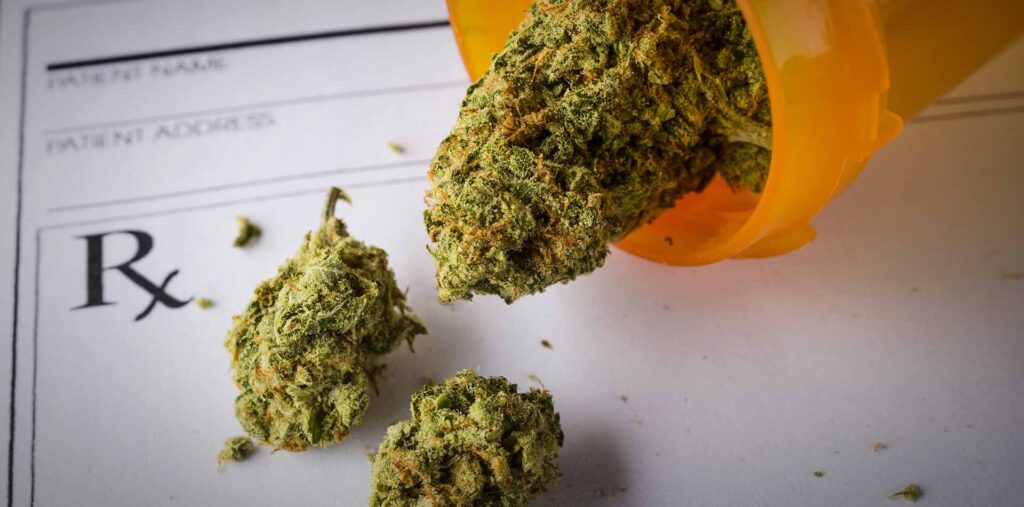
Check out our blog post that explores the question: Can You Overdose on Weed?
Is Cannabis the Same as Hemp?
One of the biggest points of confusion for those new to marijuana is understanding the difference between hemp and cannabis.
First of all, cannabis and hemp are not different species. The difference between the two comes down to legal classifications. Specifically, how much THC the plant matter or product contains.
What is Hemp?
According to the Agriculture Improvement Act of 2018 (2018 Farm Bill), hemp is defined as a variety of cannabis that contains less than 0.3% THC. Plants containing more than 0.3% THC are classified as cannabis.
How did they arrive at this 0.3% figure? Did they do some extensive study? Not really. It seems it was chosen somewhat arbitrarily. The story goes something like this.
Canadian scientist, Dr. Ernest Small, compiled a study in 1976 called, A Practical And Natural Taxonomy for Cannabis. The study defined 0.3% as the number to distinguish between low-THC cannabis from high-THC cannabis.6
The thing is, Dr. Small’s use of 0.3% as a threshold was intended for his 1976 study. Somehow, this number was adopted as the threshold to distinguish hemp from cannabis – even though it may not have been Dr. Small’s intention.6
The U.S, is not alone in using this number to distinguish between hemp and cannabis. Canada, Europe, and some parts of Australia also use this number.
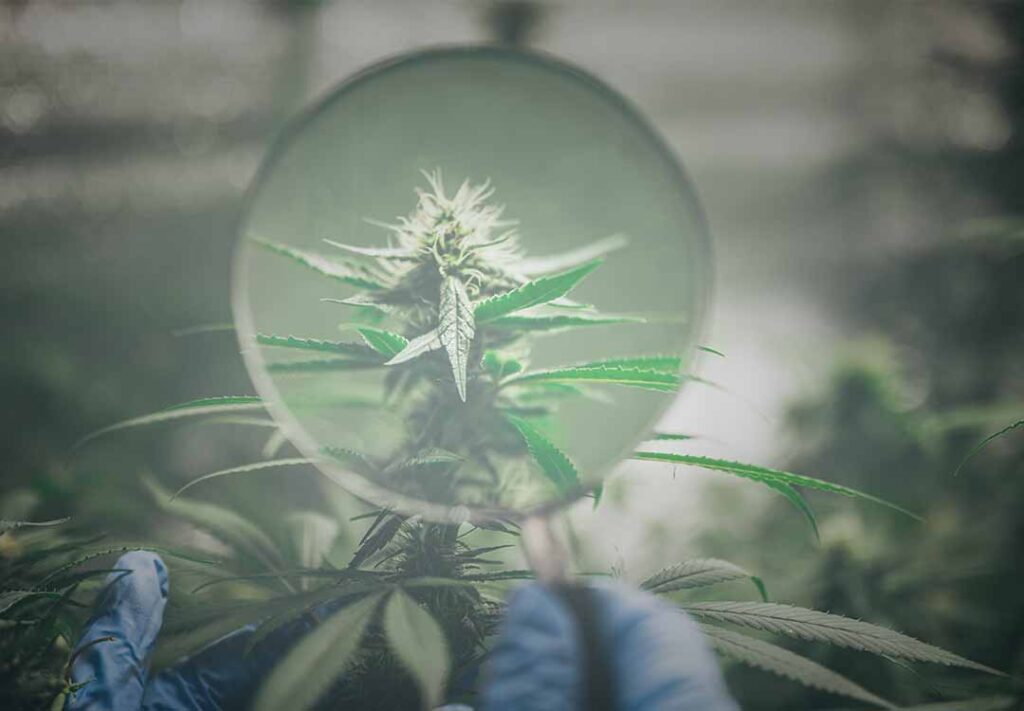
Check out our article that answers the question: Hemp vs Cannabis: What’s the Difference?
How Many Different Types of Cannabis are There?
Although there’s some debate about the true number of species of Cannabis, three species are generally recognized: Cannabis sativa, Cannabis indica, and Cannabis ruderalis.
Cannabis ruderalis plants tend to have low THC and Cannabidiol (CBD) levels but have the ability to flower automatically without the help of a cultivator. Because of this, cannabis ruderalis plants are popular with cannabis breeders who will use them to create autoflowering hybrid strains with indicas or sativas.
Major Types of Weed and Effects
Most strains available at dispensaries are either sativa, indica, or a hybrid mix of both. Within each species there are many different strains of cannabis – each with their own unique scent, flavor, and effects.
Before we look at the differences between Indica and Sativa, it is important to note that trying to determine the potential effects of a strain of cannabis by identifying if it is indica or sativa is somewhat outdated.
Although identifying a strain of cannabis as indica or sativa can give you a general idea of its potential effects, it certainly doesn’t tell you the whole story.
The more we learn, we understand that each person’s experience with cannabis can be determined – in large part – by how the cannabinoids and terpenes in a strain interact with their endocannabinoid system. That’s why everyone’s experience with cannabis will vary.
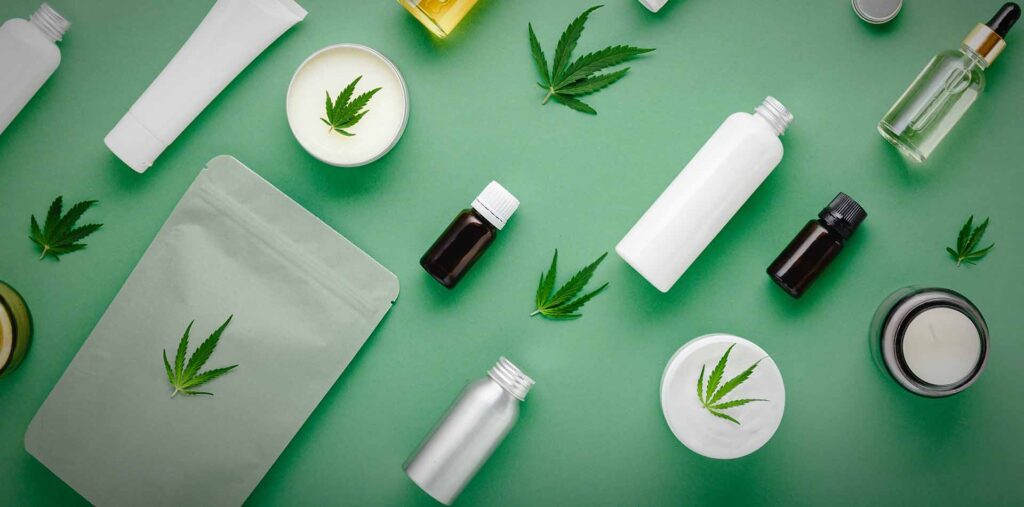
What is Cannabis Indica?
Cannabis indica plants originated near East Asia. Indica plants are short in stature and feature broad leaves with shorter growing cycles. Due to their shorter flowering periods, indica plants are well-suited for growth in cooler climates.
Indicas are typically described as having sedative, full-body effects and have been known to help alleviate pain and insomnia, while helping to promote relaxation.
Due to their full-bodied effects, Indica strains can be helpful in treating conditions like multiple sclerosis, glaucoma, chronic pain, Crohn’s disease, headaches, and sleep disorders. Indicas can also be used to help treat anxiety and boost appetite.
However, some patients have found that certain indicas can actually exacerbate their anxiety. This is why it is important to always test new strains before committing to using them as medicine. Many consider Indicas to be best suited for nighttime use.
What is Cannabis Sativa?
Cannabis sativa plants are native to Central and East Asia. Sativa plants are tall with thinner leaves. Sativas thrive in warmer climates like South Africa and Mexico.
Sativa strains tend to provide energizing and uplifting effects that are more cerebral than physical. Sativas have been known to help boost creativity and increase mental focus. Due to their uplifting effects, sativas are often used to help treat symptoms related to depression, anxiety, PTSD, and mood disorders.
It’s important to note that some patients have found that sativa strains can increase their anxiety. That’s why it’s important to always test out a new strain before committing to using it as medication.
People tend to enjoy sativa strains of cannabis in the morning or during the day when they need to be functional.
What Are Hybrid Strains of Cannabis?
Hybrids are crossbred strains of cannabis with both Indica and Sativa genetics. Although hybrids can take after either parent, the goal is usually to create a strain that features the desirable characteristics of both parents.
Hybrids are common, with many indica and sativa strains having hybridization somewhere in their ancestry.
In some cases, a hybrid strain may be more characteristic of one species – indica or sativa – and will be referred to as an indica-dominant or sativa-dominant hybrid strain. For example, Northern Lights is an indica-dominant hybrid strain.
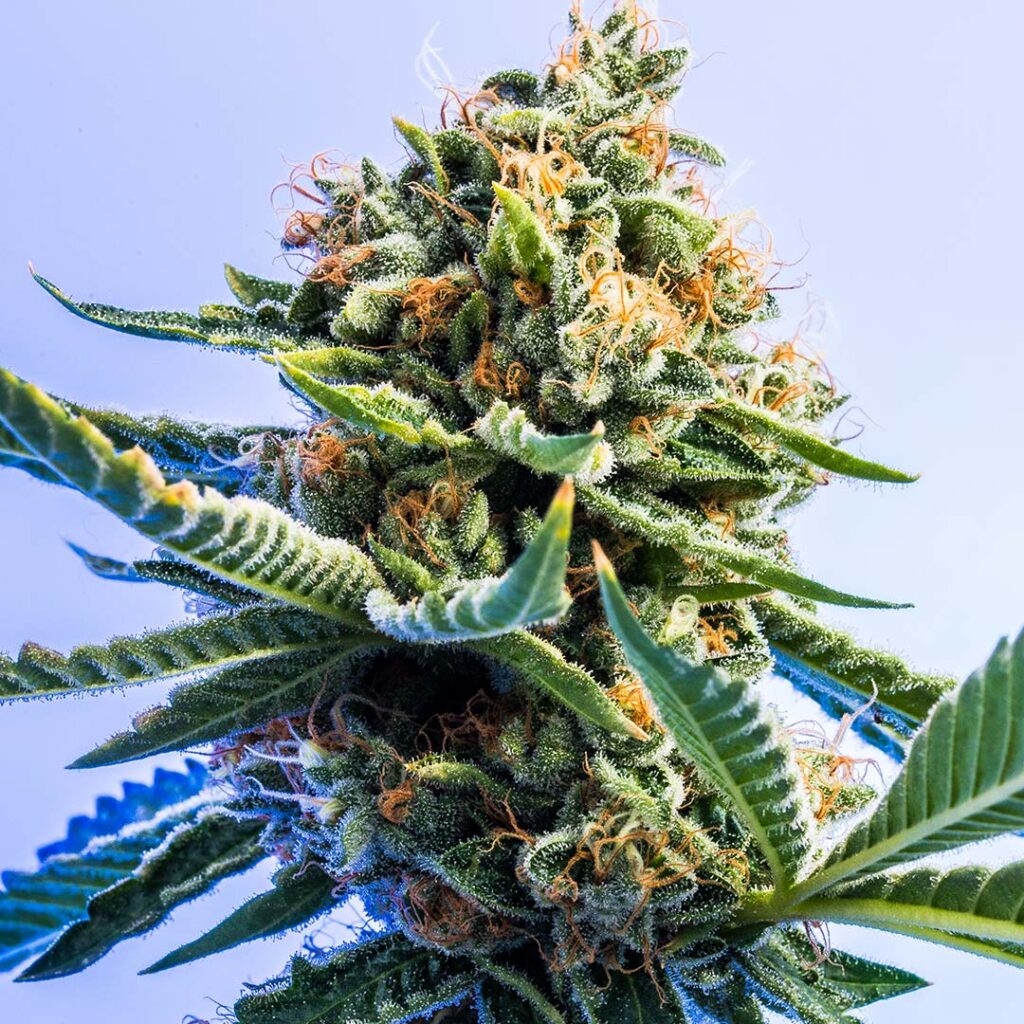
Learn more about the Differences Between Indica, Sativa, and Hybrid Strains of Cannabis
Pure Indica or Sativa Strains Are Rare
A pure indica or sativa strain that has not been mixed with another type of strain is rare and are known as landrace strains.
A landrace strain of cannabis is a strain that has thrived in a certain region for centuries and has not mixed its genetics with other strains. These strains have adapted to the growing conditions in their part of the word. As a result, they’ve developed unique flavors, aromas, and effects.
A few examples of landrace strains include Acapulco Gold, Maui Wowie, and Durban Poison.
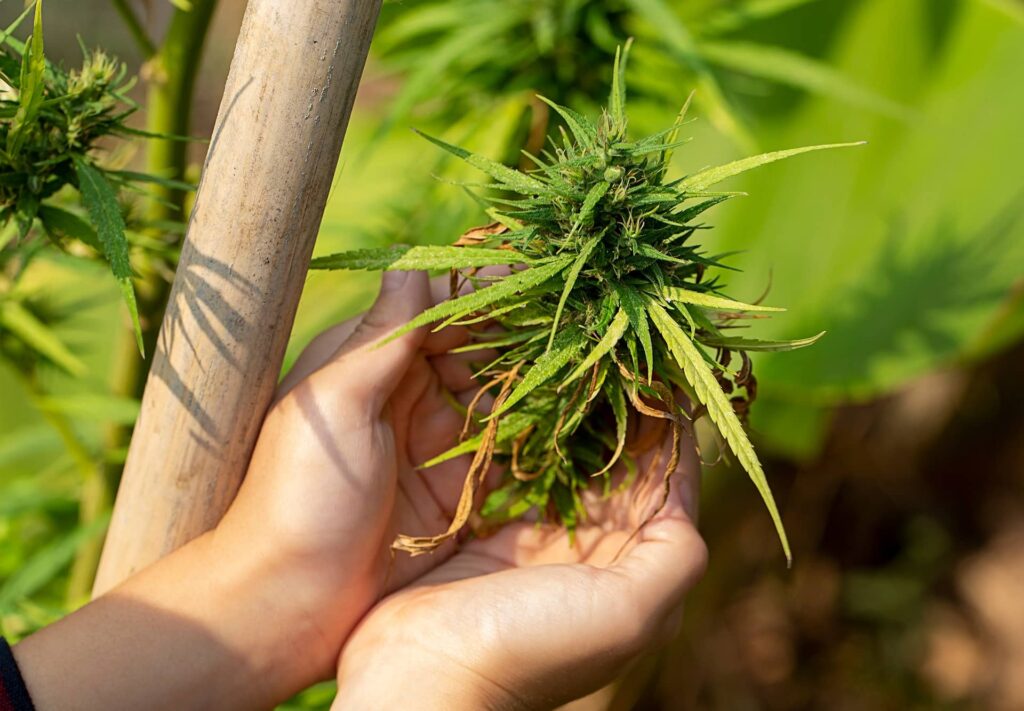
Check out our article that answers the question: What is a Landrace Strain?
Types of Weed Products
When most people think of marijuana, cannabis, or weed they’re usually referring to the flowering buds of the plant. This is known as flower and can be ground up and smoked or vaped.
Besides that, there are many other ways of consuming cannabis including THC edibles, concentrates, extracts, and tinctures. THC suppositories, transdermal patches, and inhalers are a few other ways you can enjoy your cannabis.
- Check out our menu of cannabis products in Germantown, Maryland.
- Check out our menu of cannabis products in Missouri.
- Check out our menu of cannabis products in Ohio.
What are Cannabinoids?
Cannabinoids are naturally occurring compounds found within the cannabis plant. One of the most well-known cannabinoids is THC – which is the main psychoactive ingredient in cannabis.
CBD is another well-known cannabinoid. Unlike THC, however, CBD is not psychoactive and has become known for its potential health benefits.
In addition to THC and CBD, there are more than 100 cannabinoids identified in cannabis. And although THC and CBD are two of the most well-known cannabinoids, it’s believed other lesser-known cannabinoids can also have health benefits.
There are three categories of cannabinoids:
- Phytocannabinoids – occur naturally in the cannabis plant
- Endogenous Cannabinoids (endocannabinoids) – naturally produced within the bodies of humans and animals
- Synthetic Cannabinoids – produced in a lab by pharmaceutical companies
Most people are surprised to hear that endocannabinoids occur naturally within our bodies. They’re even more surprised to find out we have an internal communications system known as the endocannabinoid system.
What is the Endocannabinoid System?
The endocannabinoid system (ECS) is an internal communications system that regulates important functions like sleep, mood, appetite, memory, reproduction, and fertility. One of the most important roles it plays is to help keep our internal processes in balance.
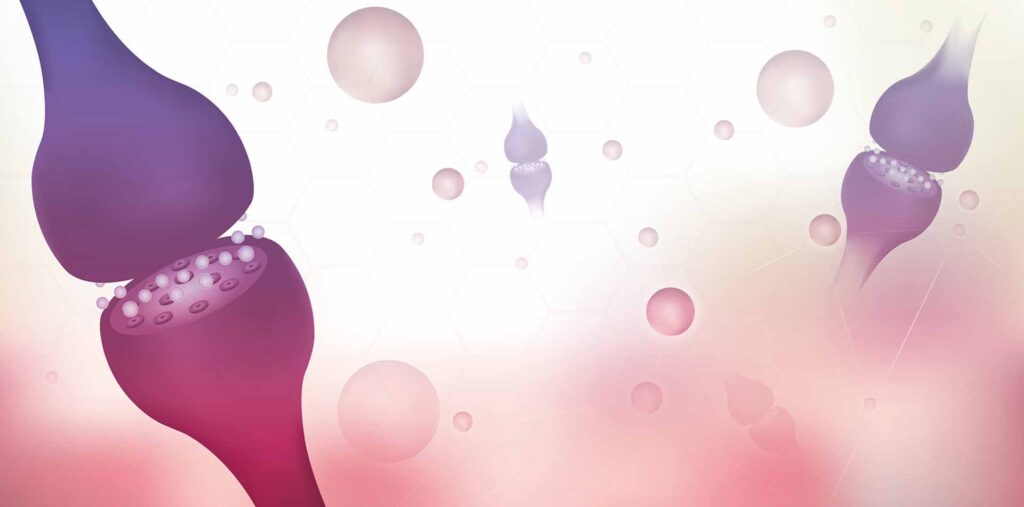
The ECS is made up of three components:
- Endocannabinoids
- A network of cellular receptors (CB1 and CB2 receptors)
- Enzymes that break down cannabinoids and endocannabinoids
Endocannabinoids
The word endogenous means grown from within. That is why cannabinoids that occur naturally in humans and animals are called endogenous cannabinoids, or endocannabinoids.
An example of an endocannabinoid is Anandamide. Anandamide was first isolated in 1992 and is named after the Sanskrit word, ananda, which means bliss or joy. Anandamide has been referred to as the Bliss Molecule due to its calming and mood enhancing effects.
It was recently discovered that anandamide is responsible for the euphoric feeling, known as “runners high,” that people can experience during, or immediately after, their runs or workouts.7
It had previously been thought that runner’s high was caused by an increased production of endorphins.
How the ECS Functions
The cannabinoids we consume when we enjoy cannabis – along with the endocannabinoids within us – interact with enzymes and the network of cellular receptors (CB1 & CB2) that are part of our ECS.
For example, the fatty acid amide hydrolase (FAAH) works to break down endocannabinoids created by our bodies, but it cannot break down THC. So, when someone enjoys cannabis, THC is able to attach to the CB1 receptor in their brain and they experience the euphoric sensation of feeling high.
Compare this to when someone ingests CBD. It’s been discovered, however, that CBD can inhibit FAAH from breaking down anandamide. By doing so, CBD enables the anandamide in our systems to attach to our CB1 receptors – which can result in a calming effect. This is one reason why CBD has shown promise in helping to alleviate anxiety.8
Achieving Homeostasis Is About More Than Just THC
An often-overlooked element in helping to unlock the therapeutic power of our endocannabinoid system is finding the right balance of cannabinoids and terpenes.
Terpenes are aromatic compounds naturally produced in plants. Terpenes are what give plants like jasmine, lemongrass, and cannabis their distinct aroma. Terpenes are bioactive, and depending on their concentration and how a person uses them, they can offer potential health benefits.

The Entourage Effect – It’s All About Synergy
When you combine the right cannabinoids and terpenes for your endocannabinoid system, it can create a synergetic effect known as The Entourage Effect– which can provide you with a more complete cannabis experience.
Bloom Medicinals understands this and it’s the foundation of what sets us apart from other businesses.
That is why we invite all of our patients to take advantage of our complimentary patient consultations. During this one-on-one consultation, our Patient Care Specialists will take the time to get to know you and your specific needs. By doing so, we could help you identify the cannabis products with the cannabinoid and terpene profiles that are best for you.
Our commitment to cannabis education is one reason why we’re concerned when we hear stories of people turning to cannabis alternatives as an effort to circumvent laws and regulations in their state.
One example of this is delta-8 THC.
What is Delta-8 THC?
As we mentioned earlier, delta-9-tetrahydrocannabinol (THC) is the primary psychoactive compound naturally found in cannabis. Delta-9 THC is just one of more than 100 cannabinoids found in the plant.
Delta-8 THC is another one of those cannabinoids. Delta-8 THC can have psychoactive effects similar to delta-9 THC. The thing is, delta-8 does not occur in significant amounts in the plant naturally.
That’s why delta-8 concentrates are extracted from CBD that’s derived from hemp. Since it is derived from hemp, delta-8-THC is considered to be legal by the Federal Government and can be purchased at convenience stores and gas stations.

According to the U.S. Food & Drug Administration (FDA), “the natural amount of delta-8 THC in hemp is very low, and additional chemicals are needed to convert other cannabinoids like CBD into Delta-8 THC (ie., synthetic conversion).” 9
A couple of concerns the FDA has shared about delta-8 THC include:
- Delta-8 THC products have not been evaluated or approved by the FDA for safe use
- The FDA has received adverse event reports involving Delta-8 THC products
- The synthetic conversion required could result in the use of unsafe chemicals
- Delta-8 products expose consumers to much higher levels of the substance than occur naturally in hemp
Why Not Put Hundreds of Cannabinoids to Work for You?
Besides the concerns shared by the FDA, another downfall of Delta-8 THC products is that they focus exclusively on just one cannabinoid – and at much higher levels than nature intended.
Most would agree that putting the power of more than 100 naturally occurring cannabinoids and terpenes to work for you seems like a more practical and sustainable way to achieve the quality of life enhancements that are possible with cannabis.
Live in a State with a Bloom Dispensary?
If you live in a state with a Bloom dispensary, we invite you to take advantage of our complimentary patient consultations.
During this consultation, our Patient Care Specialists will take the time to get to know you, so we can help you identify the cannabis products with the cannabinoid and terpene profiles that are best for you.
Take the first step toward a better quality of life and schedule your free consultation today.
Consultations available by phone, in-person, or online.
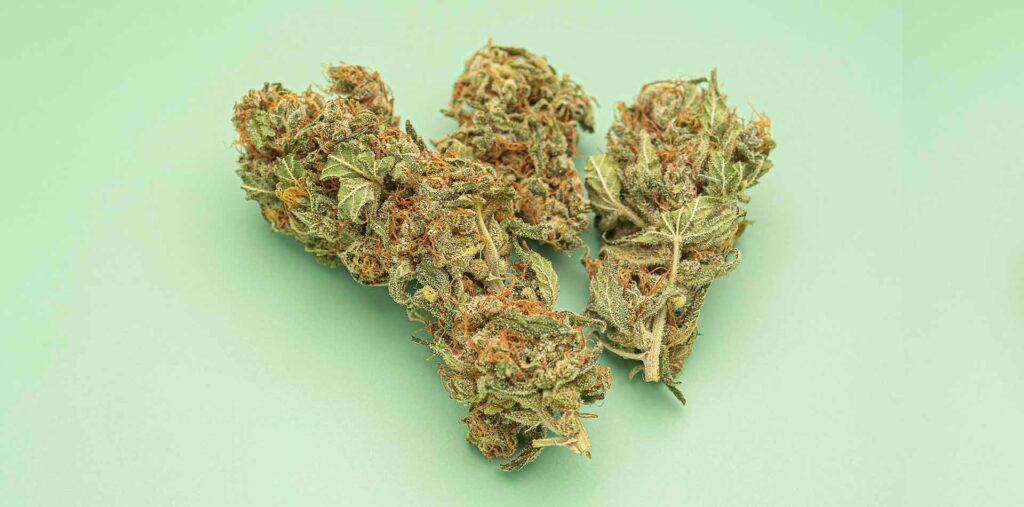
If you enjoyed what you read, make sure to check out the Cannabis Education Section of our site that features our Medical Marijuana Strains Guide and helpful information on Medical Marijuana Products.
- Where Does Weed Come From? A New Study Suggests East Asia.
- Hemp and Our Founding Fathers | World History
- https://www.ncbi.nlm.nih.gov/
- The Mysterious History Of ‘Marijuana’ : Code Switch : NPR
- Can You Overdose on Marijuana? Separating Myth from Fact
- 0.3%, the Magic Number: What This THC Threshold Is All About | Pure Craft
- New Brain Effects behind “Runner’s High” – Scientific American
- What Is the Endocannabinoid System?
- 5 Things to Know about Delta-8 Tetrahydrocannabinol – Delta-8 THC | FDA

